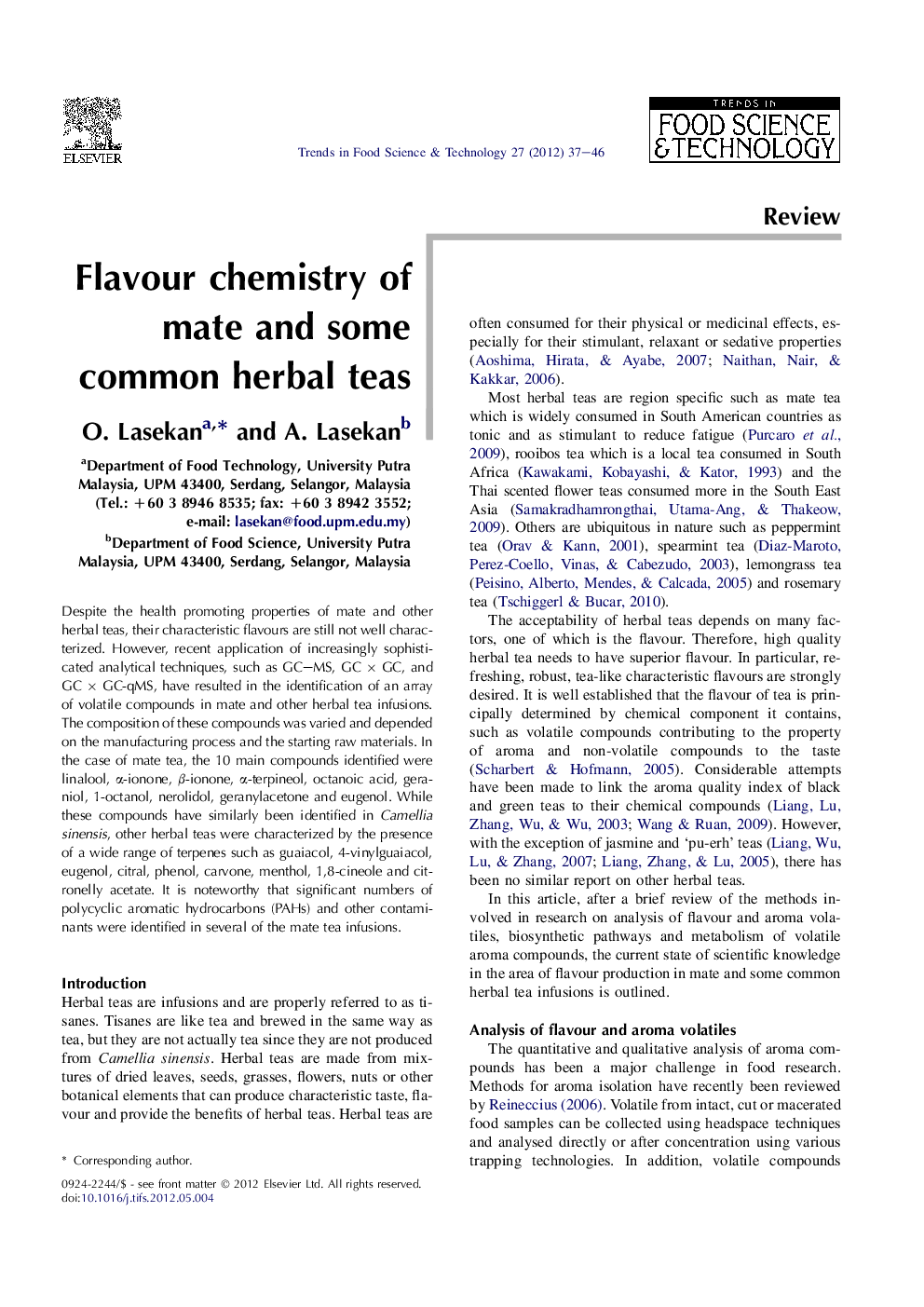| Article ID | Journal | Published Year | Pages | File Type |
|---|---|---|---|---|
| 2099881 | Trends in Food Science & Technology | 2012 | 10 Pages |
Despite the health promoting properties of mate and other herbal teas, their characteristic flavours are still not well characterized. However, recent application of increasingly sophisticated analytical techniques, such as GC–MS, GC × GC, and GC × GC-qMS, have resulted in the identification of an array of volatile compounds in mate and other herbal tea infusions. The composition of these compounds was varied and depended on the manufacturing process and the starting raw materials. In the case of mate tea, the 10 main compounds identified were linalool, α-ionone, β-ionone, α-terpineol, octanoic acid, geraniol, 1-octanol, nerolidol, geranylacetone and eugenol. While these compounds have similarly been identified in Camellia sinensis, other herbal teas were characterized by the presence of a wide range of terpenes such as guaiacol, 4-vinylguaiacol, eugenol, citral, phenol, carvone, menthol, 1,8-cineole and citronelly acetate. It is noteworthy that significant numbers of polycyclic aromatic hydrocarbons (PAHs) and other contaminants were identified in several of the mate tea infusions.
► Use of increasingly sophisticated analytical techniques. ► Such as GC–MS, 2-D GC, and GC × GC-qMS, has led to the identification of an array of volatiles. ► Mate volatile profile is characterized by 10 main compounds. ► Other herbal teas exhibit wide range of terpenes. ► Prominent among the compounds are guaiacol, eugenol, menthol, carvone and 1,8-cineole.
